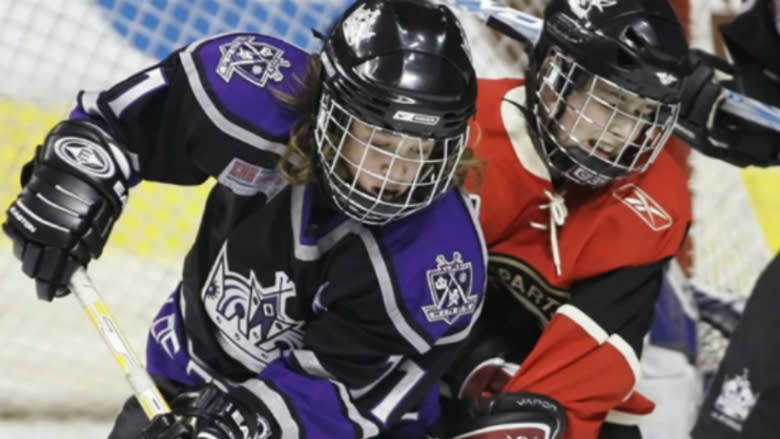Hockey-related concussions decline at ERs since peewee bodychecking ban took effect
Fewer kids have been showing up at hospital emergency rooms with hockey-related brain injuries since bodychecking was banned at the peewee level in 2013, according to new data from the Canadian Institute for Health Information (CIHI).
Alberta ERs saw 29.9 per cent fewer brain injuries among hockey players aged 10 to 14 in the two years after the ban was implemented, compared to the two years prior.
Ontario, meanwhile, saw a reduction of 20.3 per cent. (Other provinces are not included because they have yet to provide CIHI with the same, full data sets.)
It was just over three years ago that Hockey Alberta announced it would remove bodychecking from the game for peewee players (ages 11 and 12), in what was a controversial decision at the time.
Critics said it would diminish the quality of the game and lead to more injuries when kids moved on to the bantam level (ages 13 and 14).
Nevertheless, Hockey Canada followed suit weeks after Alberta's decision.
Since then, the 10-to-14 age range saw the most pronounced declines in the CIHI data, with smaller decreases among older teens over the same period, and younger children actually arriving more often in hospital ERs with hockey-related brain injuries:
University of Calgary researcher Dr. Carolyn Emery has been studying the impacts of the changes in bodychecking policy across Canada, and particularly in Alberta.
Some of her most recent research, published in the May issue of the Clinical Journal of Sport Medicine, found the bodychecking ban resulted in a 42-per-cent reduction in injury risk and a 67-per-cent reduction in concussion risk among Alberta peewee players.
Emery cautioned against drawing conclusions directly from the CIHI data, however.
She noted the 10-to-14 age category includes hockey players at the bantam level, where bodychecking is still allowed, and said the numbers don't factor in things like hockey participation hours or the increased likelihood of parents to bring kids to hospital when they get hit in the head.
"We have a lot of media attention, a lot of concern about concussions and, all of a sudden, parents are taking their kids in," she said. "So we're actually counting them better than we were before."
Her research group is also currently working on studies comparing injury rates in the bantam and midget (ages 15 to 17) levels between jurisdictions where bodychecking is generally allowed and those where it is banned at non-elite levels.
'Ever-evolving' nature of the sport
Hockey without hitting is becoming more common, even among these older age groups, in leagues where players are unlikely to go on to the top-tier junior or professional levels of the sport.
Hockey Alberta executive director Rob Litwinski said that's been a "good evolution" of the game but, at the same time, it's important to ensure that peewee players who do go on to higher-level bantam leagues are well prepared for the introduction of body contact.
That's something Hockey Canada keeps tabs on, as well, since adopting the peewee no-checking rule.
"We have a great development department that watches it very closely," said Todd Jackson, director of insurance and risk management with the national organization.
Litwinski said the changes to bodychecking rules are part of the "ever-evolving" nature of hockey.
They likely won't be the last aspects of the game to change, he added, in spite of any controversies that might bring.
"Any change in hockey can be controversial, because we all feel so strongly about it," he said.
"But it's like anything else. As it evolves, people just become used to it and realize that it makes sense and it works."



